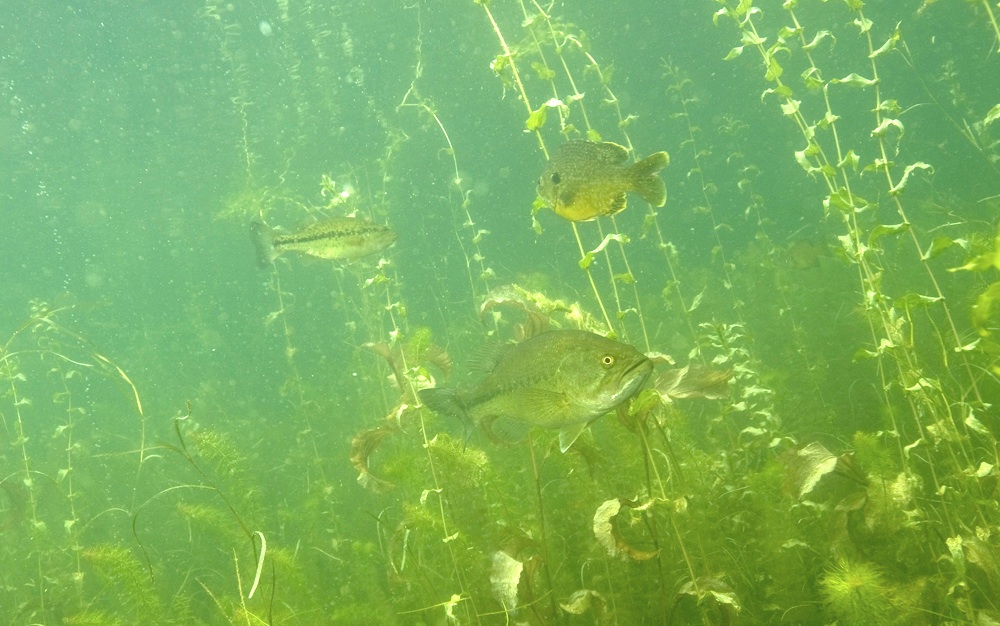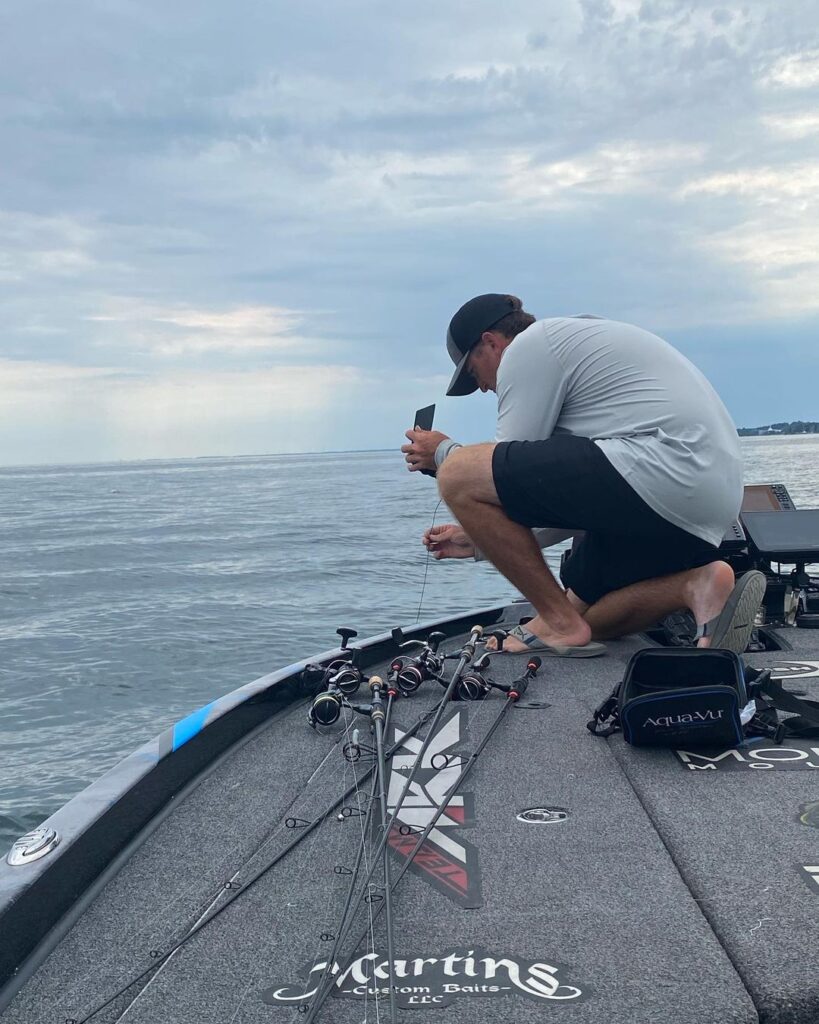Unveiling the Secrets Below: The Ultimate Guide to Underwater Fishing Cameras
The advancements in fishing technology significantly increase what we can discover underwater. With all the sonar and screen capabilities, there is still no better tool to see exactly what you are fishing than an underwater fishing camera.
Under the right conditions, fishing cameras take the guesswork out of understanding what is below the surface. With growing popularity in open water applications, a camera is an excellent addition to any angler’s technology set.
Below we will uncover why tournament pros and weekend anglers are keeping a camera on hand.
How Fishing Cameras Play an Important Role in Fishing Technology

Ever wonder if you just got a bite? Or how about knowing if your lure is attracting or spooking fish? What about knowing if you are even in the right area to begin with?
There is a ton of mystery around what actually goes on under the water when fishing. An underwater camera for fishing solves all of your questions. By being able to see exactly what is happening.
We as anglers are always guessing and trying to figure out what’s going to put fish in the boat. From testing different lures to moving to a new spot, there are many factors that go into having a successful day on the water.
Fishing cameras allow you to take your sonar and information capabilities to the next level by dropping directly on a spot to uncover every detail.
Benefits of Underwater Cameras for Fishing
Discovery
Scouting and uncovering new areas to fish are key to evolving as an angler. Fish are always adapting to current conditions. Anglers need to adjust as well if they want to increase their chances of catching fish.
In addition to sonar capabilities, a fishing camera is a tool that can be used to pinpoint specific areas. Sonar technology can only get you so far with locating specific areas to fish. Without dropping a camera in the area, it’s hard to tell exactly what you plan on fishing.
Species or Structure Identification
An underwater camera for fishing is the only piece of equipment that can show you exactly what something is. Sonar returns of structure and vegetation are mediocre at best, leaving an angler to wonder what exactly they are looking at. Sonar returns look very similar for various types of structures and underwater vegetation.
That is a problem when trying to find productive areas that hold fish. Fish will often congregate in specific types of vegetation all over a body of water, which is usually mixed in with other vegetation types. Being able to decipher between vegetation types can be key to finding the spot on the spot.

Sonar also does a poor job of showing what type of fish species you are around, causing you to waste time on a species that won’t take your bait. When different species are in the same size/weight class, it’s very difficult to tell them apart.
An underwater fishing camera can tell you exactly what types of fish you are around. If you are going for bass and see nothing but walleye, it instantly tells you to move one. Bluegill and Crappie look identical on sonar and having a camera handy can save you a bunch of time.
Detecting the Mood of Fish
Every day is a challenge to figure out what will get fish to bite. It could be the type of lure, the action of the bait, or even a specific color that triggers a bite. Seasonal and daily conditions dictate the mood of the fish.
In certain situations like vertical jigging, a fishing camera is a tool that can be used to see how they react to your bait. Are fish actively and aggressively going toward your bait? That lets you know that you are spot on with the bait choice.
If the fish seem apprehensive or even back away from your lure, that will let you know to try something different.
Every little detail matters when trying to maximize your fish catches and an underwater camera clearly shows you everything you need to see to make smart decisions on the water.
How to Use an Underwater Fishing Camera
There are several different ways to use a fishing camera from a boat. The easiest and most widely used is the handheld option, which is a stand-alone unit that can be pulled out with ease.

Our top handheld recommendation is the Aqua-Vu Micro Revolution 5.0 HD for its clear picture and superior cable management. This camera easily fits in any storage compartment for easy access when you want to learn more about a specific area.
Anglers run all types of electronics and having a stand-alone camera allows it to be a valued addition to any setup. For anglers that run premium electronics, there are also fishing cameras that plug directly into your head units. This gives you added flexibility in viewing capabilities.
Our top premium camera option is the Aqua-Vu Multi-Vu Pro, which connects directly to your compatible fish finder unit. The camera and cable are then deployed over the side of the boat to view on your main fish finder screen.
Functionality and Settings
Underwater cameras for fishing are designed to work right out of the box. However, there are additional settings that can be tweaked to enhance your visibility underwater.
Some of the core features are:
IR (Infrared) Lighting: This gives the angler the option of increased visibility in low-light scenarios. Dusk, cloudy, or even nighttime use would benefit from turning the IR light on. Infrared lighting is invisible to the human eye and doesn’t spook the fish when turned on.
Screen Brightness: Being able to adjust the screen brightness is key when using a fishing camera in many different situations. Turn the brightness up when it’s sunny outside to combat the hard-to-see details. At dusk or other low light scenarios, turning the screen down will allow you to see your surroundings better while keeping all the details the underwater camera picks up. It’s also a great way to extend battery life.
Contrast: This allows you to fine-tune the picture that is captured with the camera. Increasing or decreasing highlights is a great way to get the best picture with changing water clarities. Depending on the setting you prefer, different features will pop on the screen.
When to Utilize
The best time to use an underwater camera for fishing is when you have located an area to fish and are spot-locked in a specific location. The camera can then be deployed to show you exactly what is beneath the boat.

Having it in an easy-to-reach location will allow you to incorporate it into your fishing strategy with ease. The hand-held version with the patented Integrated Camera Reel System gives you even quicker access to seeing what’s down there and keeps your camera wire organized.
The Challenges of Using a Fishing Camera
Murky Water
Underwater fishing cameras can only see as far as the human eye, making them difficult to use in very murky water conditions. Sediment and mud particles will block the camera’s view, making it difficult to see unless you are right on top of what you are trying to uncover.
Depending on how murky the water is, there is still value if you are looking to get a close-up view of specific pieces of structure. The conditions and shape of hard structures like boulders and brush piles can be further examined to gain an edge.
High Wind or Current
Camera stability is key when examining an area for fishing. In rough conditions or heavy currents, it’s difficult to keep the camera in one place to get a good view.
To combat tougher conditions, the addition of a weight or a fin to the underwater camera can create added stability. Even with those two additions, you can run into situations where the movement is too much to handle, making it difficult to utilize the camera.
Featureless Areas
Underwater cameras for fishing are designed to see details not detectable by traditional sonar technology. Their value comes with seeing specific areas and structures.
When fishing in an open basin where there is no obvious structure present, it’s hard to find an underwater camera helpful. Other than the chances of a fish swimming by, you most likely will return an empty screen.
Targeting specific areas or structures within a waterbody is a must before pulling out your fishing camera.
Final Thoughts on Using Cameras for Fishing
Underwater cameras for fishing are an affordable way to maximize your investment in marine electronics. They are simple to use, easily transportable, and excel in many different situations.
There are several different options to fit any angler’s needs. If you are looking for the right unit for your fishing situation, check out this underwater camera buyer guide. It will walk you through the different models and what you should consider before making a purchase.
